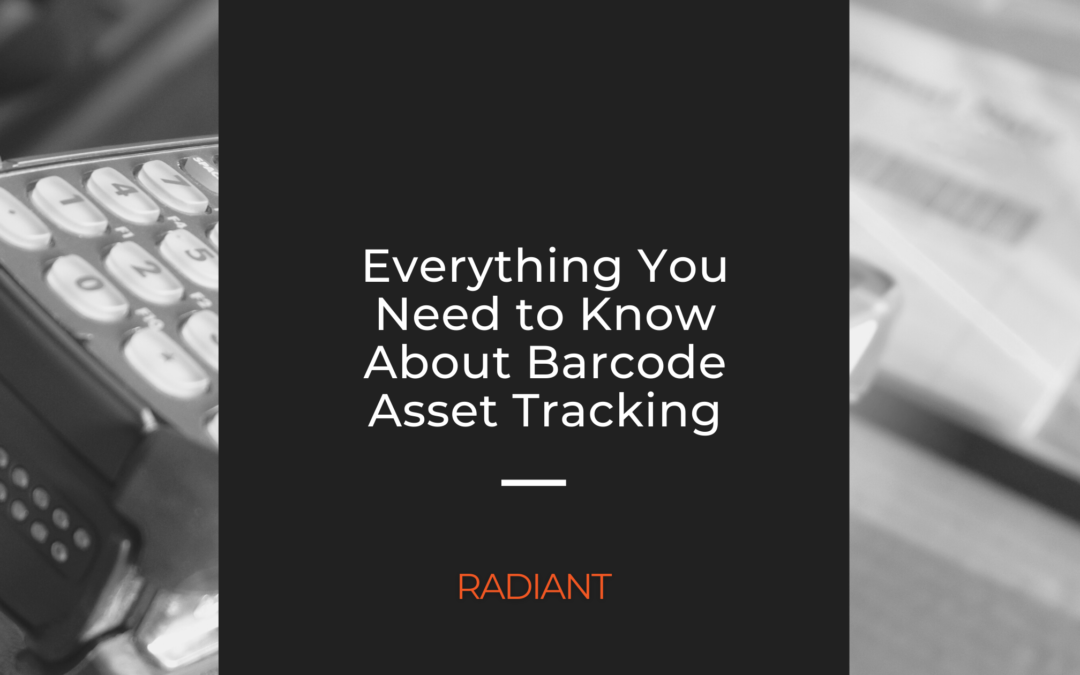Most businesses now rely on some form of technology to keep track of their assets. Whether you are using a barcode scanning system or RFID tags, it is essential to understand the different types of technology and what will work best for your business. In this blog post, we will explain the basics of barcode asset tracking and how it can be used to benefit your business. We will also highlight some of the benefits and drawbacks of using this type of system. If you are considering implementing a barcode asset tracking system into your business, then this blog post is for you!
What is Barcode Asset Tracking?
Barcode asset tracking is a system that uses barcodes to keep track of assets. It is typically used in businesses and organizations to track items such as equipment, tools, furniture, and inventory. Barcode asset tracking systems usually consist of barcode labels, barcode scanners, and software. Barcode labels are affixed to assets and contain information about the asset’s name, description, serial number, and location. Barcode scanners are used to scan the barcodes on assets and record their data in the software. The software then uses this information to track the assets and generate reports.
The Benefits of Barcode Asset Tracking
Barcode asset tracking systems offer many benefits over traditional methods of tracking assets, such as spreadsheets or on paper:
- Efficiency: Barcode asset tracking can help increase the efficiency of inventory management by reducing the time required to locate assets.
- Accuracy: Barcode asset tracking can help improve inventory management accuracy by reducing the chances of human error.
- Cost Savings: Barcode asset tracking can help save money by reducing the need for manual inventory management tasks, such as counting and sorting assets.
- Increased Security: Barcode asset tracking can help increase security by allowing only authorized personnel to access assets.
- Improved Customer Service: Barcode asset tracking can help improve customer service by providing real-time information about the location of assets.
What to Consider when Choosing a Barcode Asset Tracking System
When it comes to barcode asset tracking, there are a few key factors to consider in order to choose a system that meets your specific needs.
First, you’ll want to think about the size of your operation. If you have a small business with only a few assets, you may not need a sophisticated system. However, if you have a more extensive operation with many assets, you’ll want to choose a system that can handle your volume.
Second, you’ll want to consider the types of assets you need to track. Barcode asset tracking systems can vary in their ability to track different types of assets. Some systems are better equipped to track small items, while others are better suited for tracking larger items.
Third, you’ll want to think about the environment in which your assets will be used. If you have an outdoor operation, you’ll want to ensure that your system can withstand the elements.
Finally, you’ll want to consider your budget. Barcode asset tracking systems can range in price, so it’s crucial to find one that fits within your budget. By considering these factors, you can be sure to choose a barcode asset tracking system that meets your specific needs.
To receive a monthly newsletter highlighting our newest and most popular blogs, sign-up below.
Preparing to Implement a Barcode Asset Tracking System
Barcode asset tracking systems have become increasingly popular in recent years as they offer a quick and easy way to keep track of inventory. However, implementing such a system can be challenging, requiring careful planning and coordination. One of the most difficult aspects is choosing the correct asset barcodes. These barcodes must be durable enough to withstand scanning and handling but also need to be small enough to fit on the desired asset. In addition, the chosen barcode system must be compatible with the organization’s existing tracking software.
Once the asset barcodes have been selected, they need to be assigned to each asset. This process can be time-consuming, particularly if the organization has a large number of assets. Finally, once the system is up and running, it is vital to ensure that all employees are properly trained to use it. However, with careful planning and execution, barcode asset tracking systems can be an invaluable tool for businesses of all sizes.
Other Asset Tracking Technologies to Consider
Barcodes have been the mainstay of asset tracking for many years, but they are not the only option available. Radio frequency identification (RFID) tags and Bluetooth low energy (BLE) beacons are two newer technologies that offer some advantages over barcodes.
Unlike barcodes, RFID tags can be read without line of sight, making them ideal for tracking assets in warehouse environments. In addition, RFID tags can store more data than barcodes, making them a better choice for tracking complex items such as medical equipment.
On the other hand, BLE beacons are less expensive than RFID tags and can be easily integrated into existing applications. BLE beacon-based systems also have the advantage of being able to provide real-time location information, which can be helpful in tracking mobile assets.
While each of these technologies has its own strengths and weaknesses, it is clear that there are viable alternatives to barcode-based asset tracking systems.
If you’re ready to learn more about how implementing a fixed asset management system could benefit your business and what technology might be right for you, check out our Physical Asset Management solution or request your demo below.
Are you ready to learn more? Request a demo.
Last Updated on September 13, 2022 by Radiant

